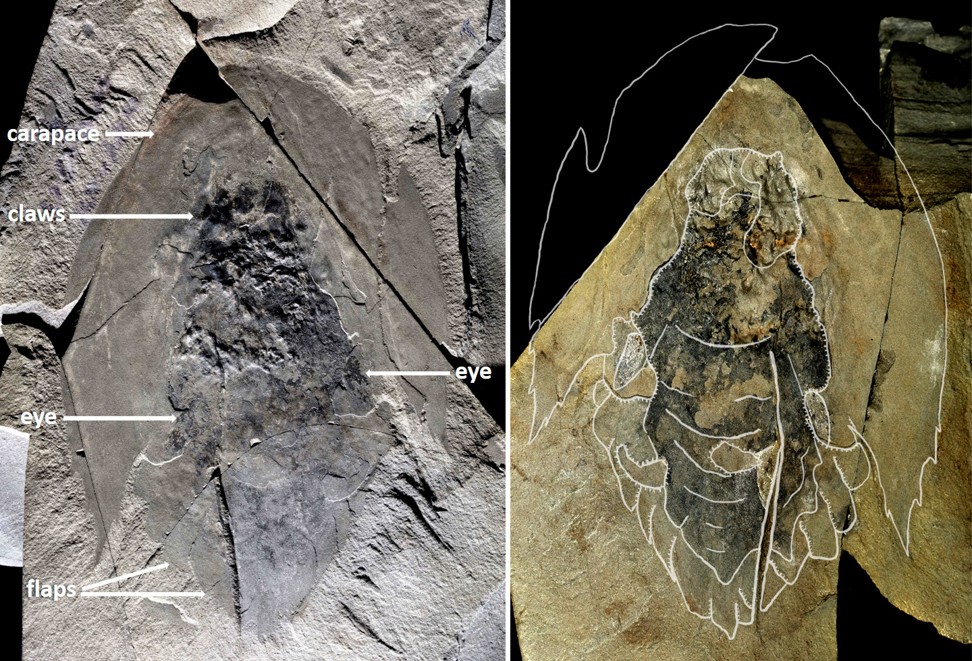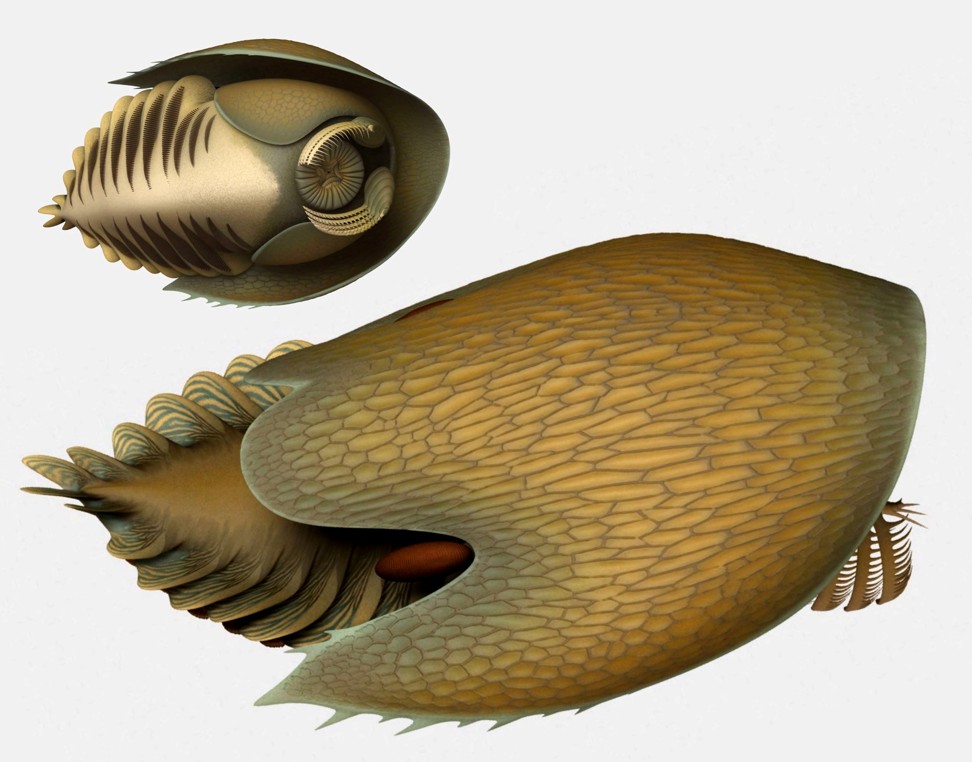
Fossils of distant, sea-dwelling ancestor of spiders and crabs unearthed in Canada
- The Cambroraster falcatus is a primordial sea creature with rake-like claws and a head resembling a Star Wars spacecraft
- It lived during the Cambrian Period 506 million years ago, when all animal life lived in the oceans
“Most animals in the Cambrian Period were small, typically a few centimetres long at most. By comparison, Cambroraster was a giant, at up to a foot long (30cm),” said palaeontologist Joe Moysiuk of the Royal Ontario Museum and University of Toronto, lead author of the research published in the journal Proceedings of the Royal Society B.
Cambroraster was excavated in Kootenay National Park in the Canadian Rockies from a rock formation known as the Burgess Shale that has yielded fossils of a wondrous array of Cambrian species.
Scientists in France unearth 400kg dinosaur bone of largest land animal to have roamed the earth
The Cambrian was a time of evolutionary experimentation when nearly all major animal groups first appeared and numerous oddballs came and went.
“With its huge head, small body and upwards facing eyes, Cambroraster superficially resembles a horseshoe crab, although in detail they are quite different animals,” Moysiuk said.
“Just like horseshoe crabs, we think Cambroraster spent its time hanging around near the sea floor, feeding on organisms buried in the mud,” he said.
Its large head was covered by a shieldlike carapace whose shape reminded the scientists of the Millennium Falcon starship of Star Wars fame.
At the front of its body were two large claws with a succession of parallel outgrowths like a series of rakes, letting it sift through sea floor mud and strain out any prey.
Tooth-like plates surrounded its circular mouth. It may have dined upon worms, small fish and larvae.
How fossils found in Asia could rewrite history of human evolution and migration out of Africa
It belonged to the same group – radiodonts – as the apex predator of the time, called Anomalocaris, a dangerous hunter reaching 1m-long that may even have targeted Cambroraster.
Radiodonts, among the earliest offshoots of the arthropod lineage, are usually known from fragmentary remains.
But the scientists found such a large number of well preserved and complete Cambroraster fossils that they achieved a breakthrough in the understanding of this significant extinct group.



